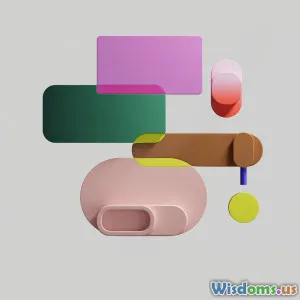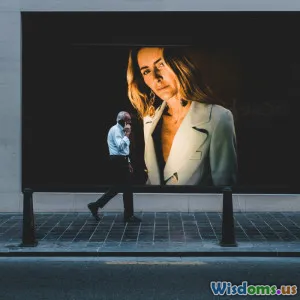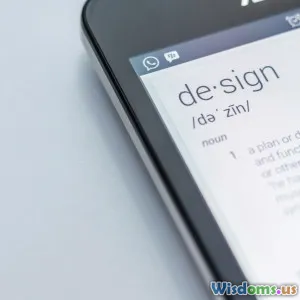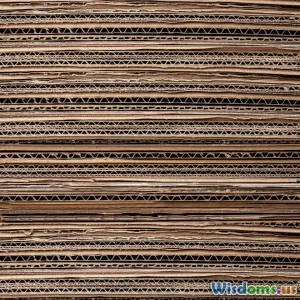
Harnessing AI for Creative Solutions in Design
8 min read Explore how AI is transforming graphic design with innovative solutions and enhanced creativity. (0 Reviews)
Harnessing AI for Creative Solutions in Design
In recent years, the ways in which artificial intelligence (AI) intersects with the world of creative design have expanded dramatically. From streamlining workflow processes to enhancing creative expression, AI has begun to totter the boundaries of traditional graphic design. This article will dive into the significant role AI plays in revolutionizing creative solutions and how designers can harness this technology effectively.
The Duality of AI in Design: Tool and Muse
A common misconception is that AI will replace the creative genius behind design. Instead, AI serves as both a tool and a muse for designers, augmenting their capabilities rather than replacing them.
The Tool Aspect
AI tools enable designers to automate repetitive tasks, allowing them to redirect their efforts towards more creative endeavors. For example, Adobe Photoshop's AI-driven features like content-aware fill and object selection simplify complex tasks and save hours of manual labor. These tools enable designers to focus on high-level creative decisions.
The Muse Aspect
Beyond functionality, AI can also inspire creativity. Systems like DeepArt use neural networks to transform ordinary images into art pieces mimicking famous styles. By feeding an AI algorithm with millions of artworks, designers can generate unique pieces that represent a blend of art history and personal creativity.
Real-World Applications of AI in Graphic Design
As technology progresses, numerous companies leverage AI to achieve creative and practical benefits, making the following examples essential in understanding its impact.
Case Study: Artbreeder
Artbreeder, a web-based platform, is a fine example of AI merging design and creativity. Users can create intricate images by mixing and merging existing artworks. The platform utilizes generative adversarial networks (GANs) to improve upon designs based on the preferences of its users. This collaboration fosters a unique blend of human input and machine learning, allowing creatives to intuitively steer the outcomes toward their vision.
Speeding Up Design Processes: Canva
Canva has embraced AI functionalities within its web platform, significantly streamlining the design process for users. With features like Magic Resize and design suggestions based on user preferences, Canva uses machine learning algorithms to predict user intent. This enhances the speed at which designers can produce effective visual content without sacrificing quality.
The Fusion of AI and Human Creativity
Personalized Content Creation
One of AI's greatest gifts to design is its ability to personalize content at an unprecedented scale. With advanced data analysis techniques, AI can deliver insights into what appeals to specific audiences. In a study conducted by McKinsey & Company, companies utilizing AI for personalization reported a 10-15% boost in sales, demonstrating the potential for effective consumer-targeted designs.
Creative Collaboration with AI
With AI platforms such as IBM’s Watson, designers can tap into extensive databases and historical data to generate tailor-made design suggestions. Designers can input ideas and preferences, and AI can provide iterations and variations based on past successful designs, thus facilitating a creative collaboration that enhances the outcome of graphic projects.
Overcoming Challenges: The Ethics of AI in Design
As with any technology, the integration of AI in graphic design raises ethical concerns. The most pressing question is about ownership: who owns an AI-generated piece of artwork, the designer or the software developer? Legal frameworks are yet to catch up with this new reality, posing challenges that require urgent solutions.
Replicability and Originality
While some argue that AI-generated art lacks originality, it’s important to consider the scope of human influence within the design process. AI analytics can provide guidance, but the creative intent, style choices, and emotional resonance remain the domain of human designers. This suggests that AI should be seen as a collaborator in creativity, one that empowers individual expression rather than diminishing it.
Future Trends: The Direction of AI in Graphic Design
The symbiotic relationship between AI and graphic design is poised to evolve, presenting exciting prospects for the future.
Enhanced Adaptive Design
AI is predicted to create designs that dynamically adapt to user preferences and behavior. Imagine websites and applications that change their visuals and layouts in real time based on user interaction. By gathering data from user actions and experiences, this technology can lead to responsive designs, yielding content tailored explicitly for its audience.
Democratization of Design
Finally, AI has the potential to democratize graphic design. As users from non-design backgrounds gain access to sophisticated AI tools, design itself becomes accessible to everyone, paving way for new voices in the industry. User-friendly AI applications encourage creativity in various domains—whether it's marketing professionals designing campaigns or small business owners creating web graphics.
Conclusion: Embracing the Future of Design
The intersection between AI and graphic design portrays an exciting horizon where technology enhances human creativity rather than overshadows it. By understanding AI's capabilities and limitations, designers can adapt and utilize these tools to create innovative solutions, allowing them to focus on in-depth creative processes and groundbreaking work. As we embrace this collaboration, the design industry stands ready for reinvention, ultimately giving birth to a future filled with unique and imaginative possibilities.
Moreover, while navigating the available AI tools can initially feel overwhelming, arming oneself with knowledge and experimentation can lead to an array of powerful outcomes. The synthesis of creativity and AI is not just a trend; it represents a fundamental shift in the design landscape, urging designers to harness AI to elevate their work to unprecedented heights.
Embrace this transformation and explore the new horizons of design, where your imagination can truly run wild through this powerful partnership with AI.
Rate the Post
User Reviews
Popular Posts





















